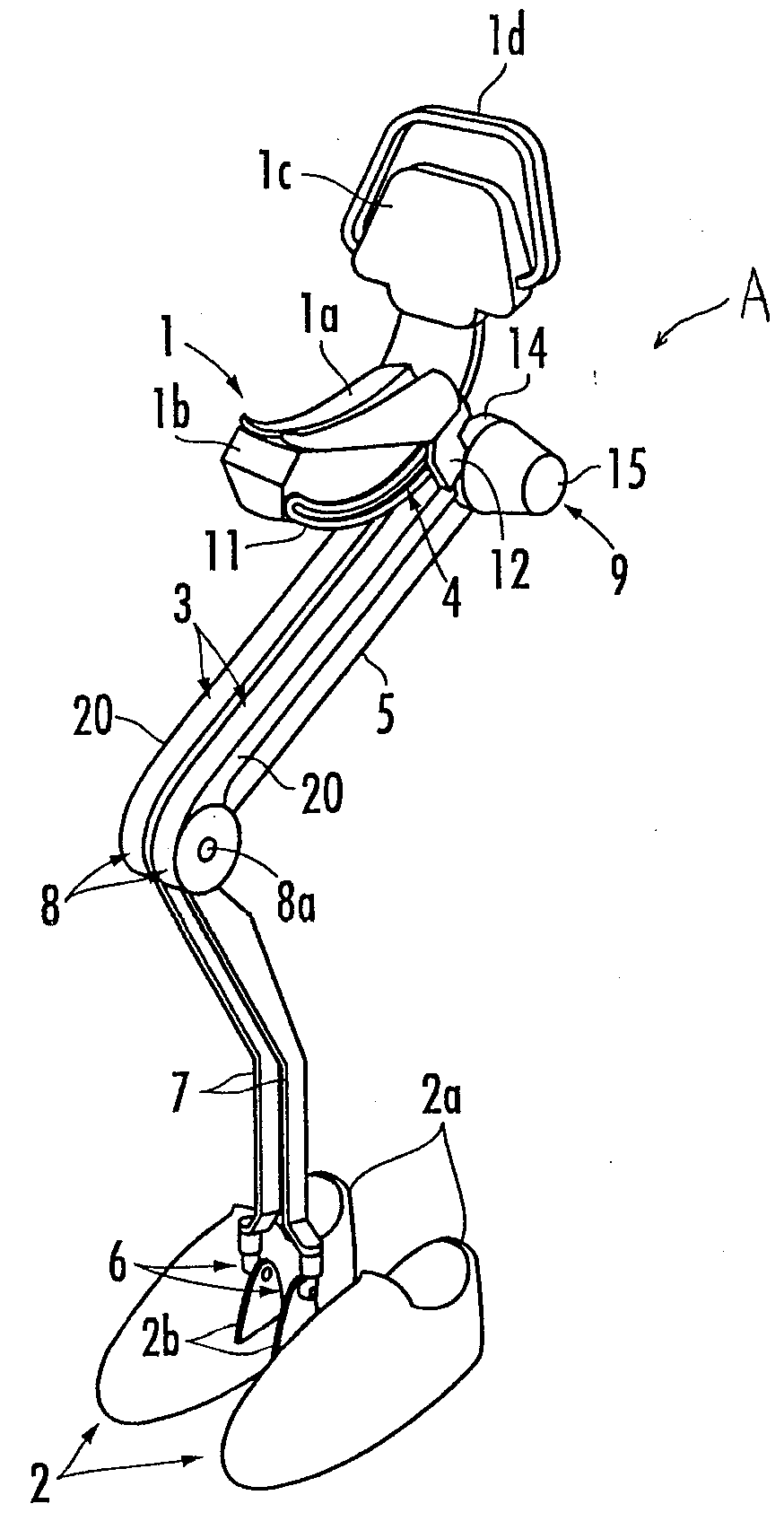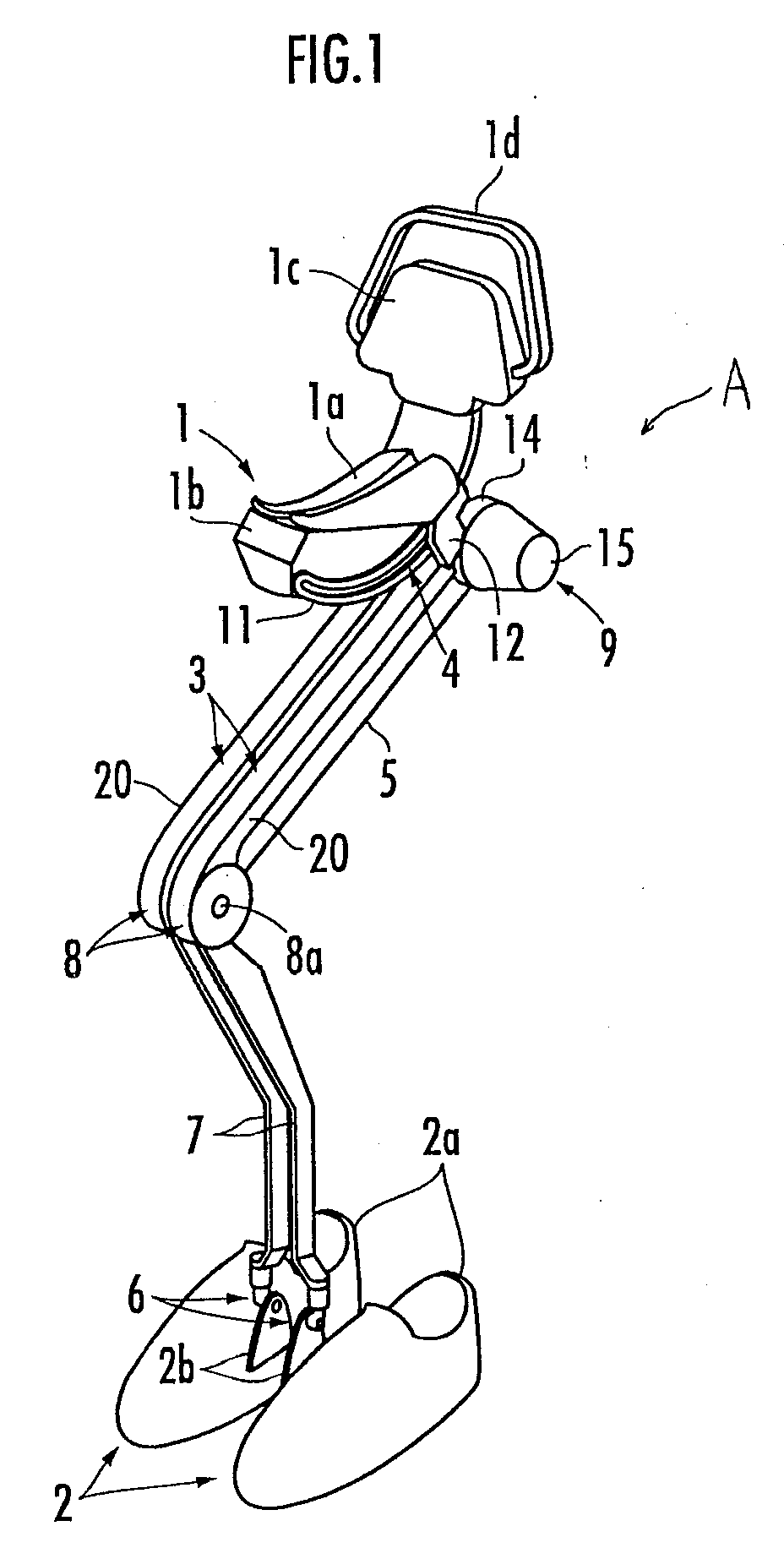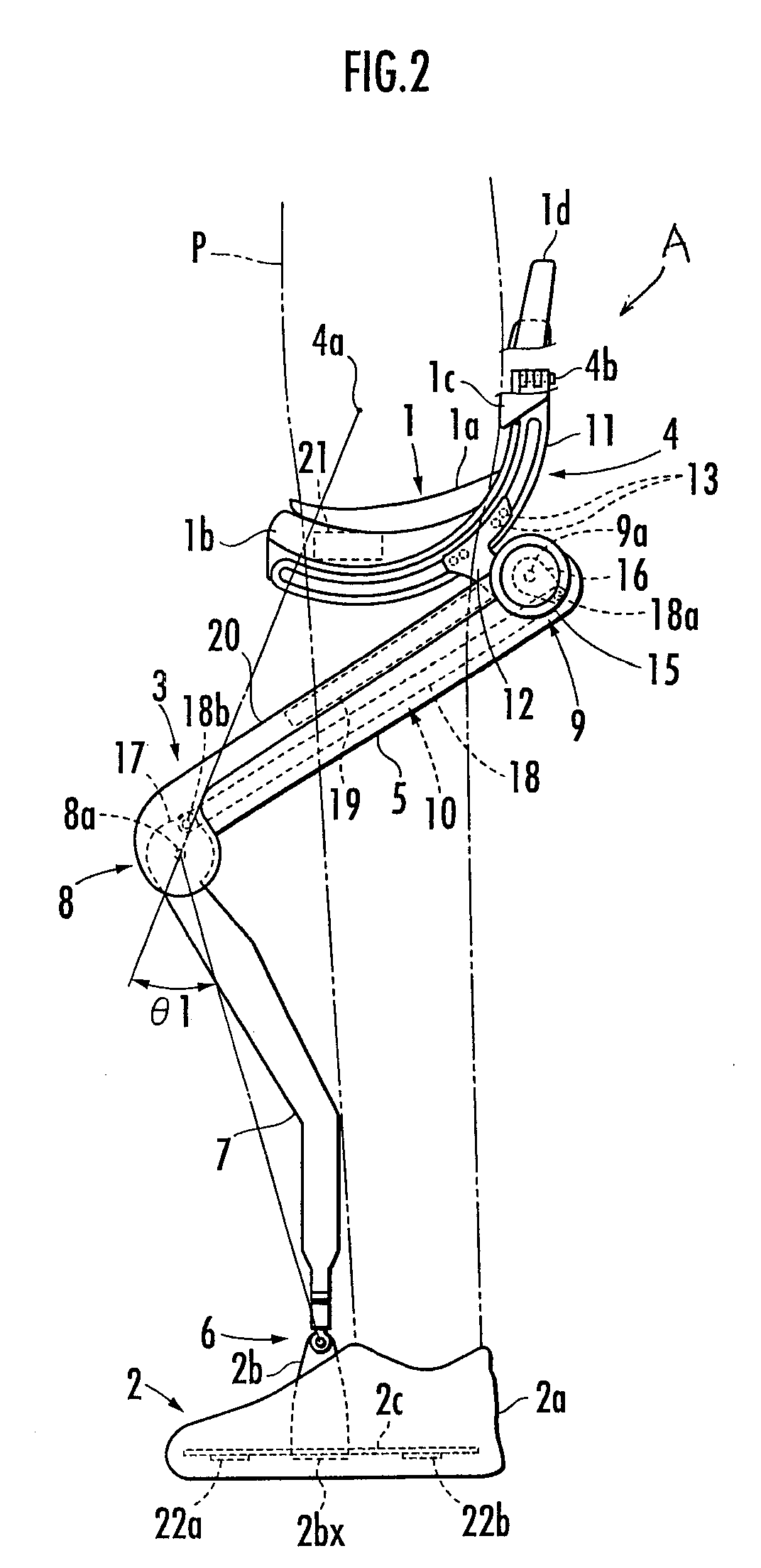[0015]In this case, the connecting rod does not need to transmit such a large translational force that can support the weight of the entire walking assist device. Therefore, the range of values of the rod transmitting force is relatively small. Moreover, since the magnitude of the rod transmitting force is not so large, the connecting rod is less apt to be deformed. Consequently, the connecting rod is less apt to be subjected to a force in directions other than the longitudinal direction of the connecting rod, such as in the transverse (shear) direction of the connecting rod. Further, since the connecting rod is provided along the
thigh frame of each leg link, the connecting rod is less likely to come into contact with other objects while the user is walking in comparison with the end side of each leg link (the lower end side of the crus frame).
[0017]Moreover, in the first aspect of the invention, the
actuator control means feedback-controls the driving force of the rotary
actuator so that the controlled variable coincides with the controlled variable desired value which is a desired value of the controlled variable requested to control the lifting force to a desired lifting force. This enables an actual controlled variable to coincide with the controlled variable desired value accurately and stably. In this case, the accurate and stable
coincidence between the controlled variable and the controlled variable desired value means that it is consequently possible to stably control an actual supporting force acting on each leg link from the floor side to an appropriate supporting force (the supporting force corresponding to the controlled variable desired value) enabling the desired lifting force to be applied to the user from the lifting force transmitting portion.
[0020]Specifically, the
stain gauge constituting the
strain gauge force sensor generally has high sensitivity only in a particular direction. Therefore, the use of the
strain gauge force sensor enables more accurate measurement of the rod transmitting force in the longitudinal direction of the connecting rod.
[0022]Specifically, in order to apply an upward lifting force to the user from the lifting force transmitting portion, it is necessary to apply the driving torque, which biases the leg link in the stretching direction, to the third joint of the leg link connected to the foot attachment portion in contact with the ground. The rod transmitting force is largest at the time of applying the driving torque. In this case, according to the third aspect of the invention, the rod transmitting force in biasing the leg link in the stretching direction is a
tractive force. Therefore, the rod transmitting force effectively prevents an occurrence of deformation such as buckling of the connecting rod. Consequently, the walking assist device is capable of measuring the rod transmitting force more accurately.
[0024]According to the fourth aspect of the invention, in order to control the lifting force to the desired lifting force, the desired supporting force setting means sets the desired supporting force which is a desired value of the supporting force to be applied to each leg link from the floor side. In addition, on the assumption that the desired supporting force is applied to the leg link from the floor side, the controlled variable desired value, which is requested to provide the third joint of the leg link with a torque balanced with a moment applied to the third joint of the leg link by the desired supporting force, is determined on the basis of the set desired supporting force and the value of the displacement angle of the third joint measured by the
joint angle measuring means. Therefore, it is possible to easily determine a controlled variable desired value appropriate for controlling the lifting force to the desired lifting force. The reason for requiring the measured value of the displacement angle of the third joint in addition to the desired supporting force in order to determine the controlled variable desired value is that the moment acting on the third joint of the leg link by the desired supporting force varies according to the displacement angle of the third joint of the leg link.
[0026]According to the fifth aspect of the invention, on the assumption that the desired supporting force set by the desired supporting force setting means is applied to the leg link from the floor side, the basic value of the controlled variable desired value is determined with the basic value defined as a value of the controlled variable requested to provide the third joint of the leg link with a torque balanced with the moment applied to the third joint of the leg link by the desired supporting force. Moreover, in the fifth aspect of the invention, an additional correction amount including a correction amount of the basic value is determined on the basis of the measured value of the displacement angle of the third joint, where the additional correction amount is requested to provide the third joint of the leg link with a torque against at least one of a
resistance force generated at the third joint due to a frictional force at the third joint of the leg link, a
resistance force generated at the third joint of the leg link due to an inertial force caused by a motion of the part on the foot attachment portion side from the third joint of each leg link, and a
resistance force generated at the third joint of the leg link due to a gravity acting on the part on the foot attachment portion side from the third joint of each leg link. The controlled variable desired value is determined by correcting the basic value with the additional correction amount. Further, the
actuator control means feedback-controls the driving force of the rotary actuator so that the controlled variable desired value determined in this manner coincides with an actual controlled variable. This enables the compensation for the effect of a resistance force caused by at least one of the frictional force, the inertial force, and the gravity described above. Consequently, it is possible to prevent the user from feeling uncomfortable in moving the foot attachment portion in the air.
 Login to View More
Login to View More  Login to View More
Login to View More 


